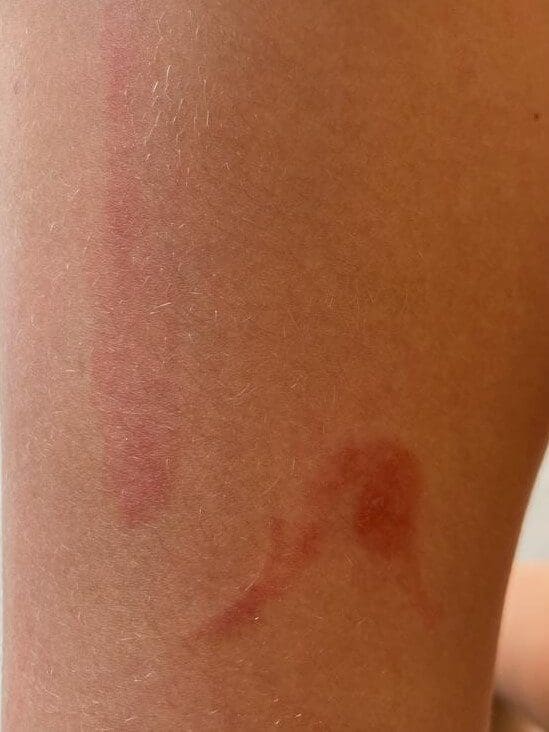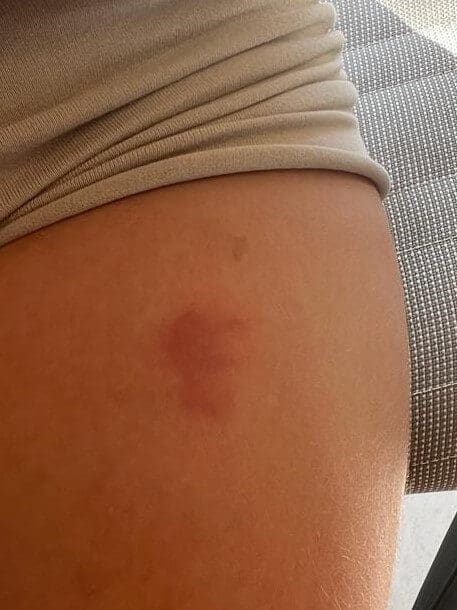
Phytophotodermatitis – a phototoxic skin reaction
Phytophotodermatitis is a type of dermatitis (inflammatory skin condition), that is more common in adults than children.
Nonetheless, it is an interesting condition that is worth learning about.
This post was written by a one of the top pediatric dermatologists out there, Professor Danny Ben Amitai, and you can find out more about him here.
What are phototoxic reactions?
Phototoxic reactions are exactly what they sound like.
Photo – light (radiation)
Toxic – poisonous
Phototoxic reactions refer to situations when a drug or chemical in our skin undergoes activation following exposure to UV radiation (sun rays) with a certain wavelength.
Let me give you an example – we all know that when taking certain medications, we are advised to avoid the sun. This is because the sun’s UV rays can cause dermatitis in the exposed skin when someone is taking these medications.
Still with me? Let’s continue then.

What is phytophotodermatitis?
This is a term used to describe a group of phototoxic reactions where a chemical that is found in certain plants is affected by light.
Phyto – plant
Photo – light (radiation)
Dermatitis – skin inflammation
What is the most common cause of phytophotodermatitis in children and adults?
Phytophotodermatitis is most commonly caused by lime – a citrus plant closely related to lemons.
Other plants that may cause this inflammation are – celery, carrots, fennel, dill, ficus, fig, strawberries and more.
How exactly does this rash occur in people?
This could happen when a few drops of lime juice drip onto an area of skin exposed to the sun.
In the image attached the girl touched the areas seen in the photo with her fingers after having some lime.
How is phytophotodermatitis diagnosed?
A history of exposure to the sun following exposure to a plant or fruit, combined with the appearance of a characteristic striped rash on the exposed areas, is diagnostic.
The rash can also be shaped like drops (if some lime juice was dropped on the skin for example) or have a finger-like shape – take a look at the attached images.
What is the treatment for phytophotodermatitis?
There is no specific treatment for phytophotodermatitis. Of course, the first thing that needs to be done in any type of phototoxic reaction is to discontinue exposure to the substance that caused the reaction. Prevention can be achieved with the help of sun-screen (by the way, we have an excellent post about the importance of using sun-screen in children, here).
The use of medication such as topical steroids is rarely needed.
In summary, a cute but rare condition.
Goodluck!
For comments and questions, please register
